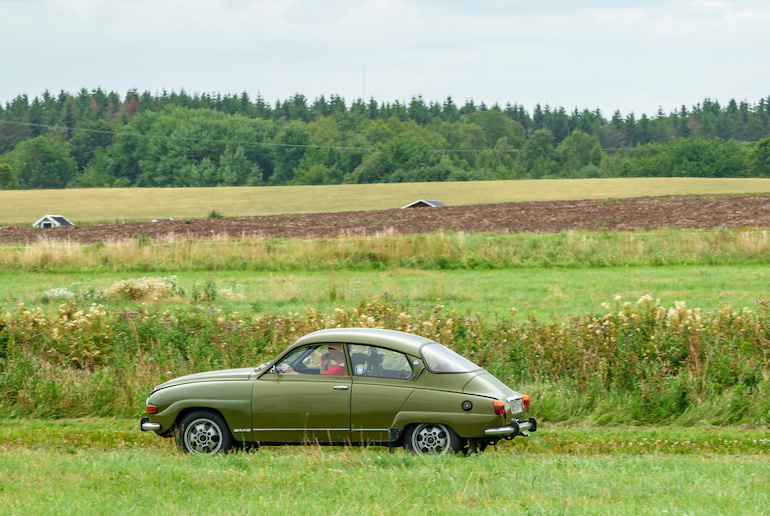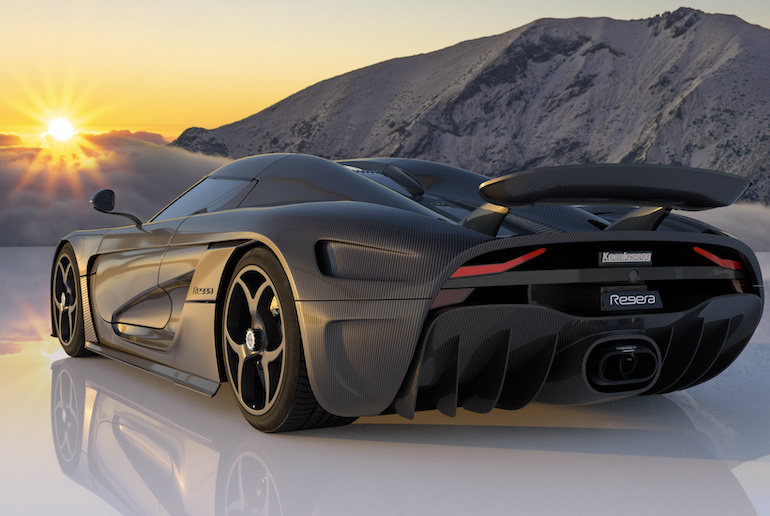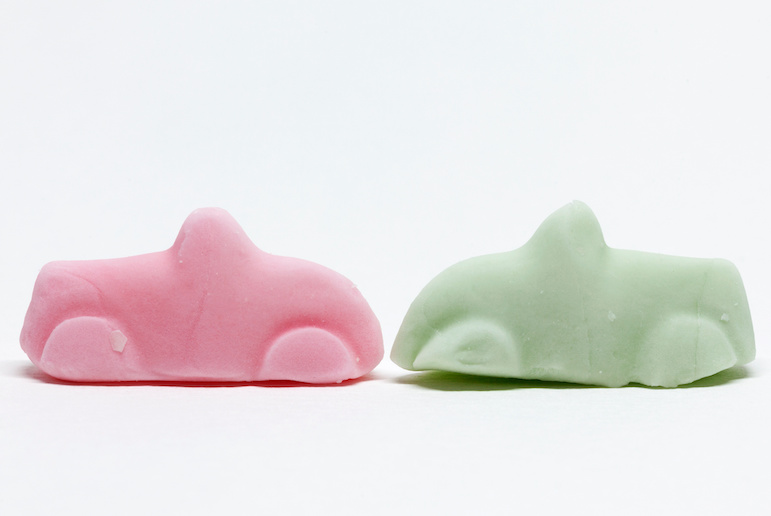Sweden might be known for its serene landscapes, tasty meatballs and flat-packed furniture, but let’s shift gears for a moment – the land of the midnight sun also shines brilliantly in the automotive world.

Throughout the years the Swedish car industry has seamlessly merged innovation with elegance and created some big, well-known brands.
While carmakers such as Volvo may immediately come to mind, there’s so much more under the hood of this Nordic nation’s car-making legacy.
In this post, we’ll steer you through Sweden’s top automotive brands and models, shining a spotlight on their unique traits and histories.
Oh, and just a little teaser for those with a sweet tooth: ever heard of Ahlgrens Bilar? It turns out that the most popular car in Sweden is not drivable but, chewable and tasty instead!
So, cruise along with us as we uncover the fascinating world of the Swedish automobile!
How Sweden became a car-making nation
Although initially overshadowed by its European neighbours, Sweden saw potential in the automotive sector in the early 20th century, as industrialization took centre stage globally.

The country’s big size and cold climate posed unique challenges, necessitating vehicles that were both reliable and adaptable.
This was the catalyst for Swedish automotive design and the nation’s car industry grew with a sense of purpose and innovation that made it stand out.
And the establishment of groundbreaking companies in the early 20th century laid the blueprint for Swedish automotive innovation.
The Swedish car industry’s eagerness to embrace new safety features further solidified its global reputation.
These early decisions and breakthroughs set the tone for Sweden’s position in the car-making world today.
The big Swedish car brands
So let’s look at the top two brands in the Swedish car industry – names that we all know – Volvo and Saab.
Volvo
In 1927, Assar Gabrielsson and Gustaf Larson co-founded Volvo in Gothenburg, Sweden. With safety as its cornerstone, Volvo swiftly became synonymous with safety.
This commitment was solidified in 1959 when a Volvo engineer Nils Bohlin invented the three-point seat belt.
Volvo patented the design, but then made it free to use for all car manufacturers – leading to it becoming a standard safety measure worldwide today.
Among their vehicles, models like the durable Volvo 200 series, the contemporary XC90, and the refined S60 have turned heads and won hearts globally.
Volvo has become more than just a brand; it’s a global symbol of safety, reliability and Swedish engineering excellence – although now, many Volvo cars are made in China.
Saab
A brand originally focused on aircraft, Saab transitioned into car manufacturing in 1944, bringing with it a unique blend of aerodynamic design and performance.
Their vehicles, like the Saab 900 and 9-3, became iconic for their distinctive style and turbocharged performance.
The fusion of aviation expertise with automotive innovation made Saab a much-loved brand, both in Sweden and internationally.
Known for their quirks and unmistakable design, Saab cars have cultivated a dedicated following that persists today.
But where exactly is Saab today? Well, the Saab company stopped producing cars in 2011.
However, the structures and assets of Saab were acquired by National Electric Vehicle Sweden (NEVS) in 2012, evolving the brand with a focus on electric vehicles.
Other brands
Among other vehicles emanating from Sweden, there’s a name that stands out when we talk about sheer speed and luxury: Koenigsegg.

Established in 1994 by Christian von Koenigsegg, this brand’s vision is to make well-crafted world-class supercars.
Renowned for their avant-garde designs and breathtaking performance, Koenigsegg cars have earnt their place in the high-end sports car domain.
Flagship models like the Regera and Jesko bear testament to the brand’s commitment to automotive excellence.
Emerging players
Beyond the heavy hitters, Sweden is home to a bevy of other car companies and startups riding the electric vehicle (EV) wave.

This vibrant ecosystem is driven by a commitment to sustainability and innovation, with Polestar emerging as one of the main players in the EV world.
Originating as a performance car company under Volvo, Polestar shifted gears, rebranding itself as a standalone electric performance car manufacturer.
With the backing of Volvo, Polestar has made notable strides in the EV market, masterfully blending Swedish design with electric power.
Models like the Polestar 1 and Polestar 2 encapsulate the brand’s vision for sustainable yet thrilling driving experiences.
As the world shifts to more sustainable modes of transport, it’s clear that Sweden, with its rich automotive history and forward-thinking startups, will remain at the forefront of the electric revolution.
Are any car brands still made in Sweden?
Several car brands are still made in Sweden, although some production has also been shifted to other countries in certain cases.
Volvo
Volvo is now Chinese-owned and has become a global brand with operations in various countries.
And as part of its global strategy, the company has set up manufacturing units in other countries, such as China and the US.
However, it still manufactures many of its vehicles in Sweden, with factories in Gothenburg (Torslanda) producing models like the XC60, XC90, V90, and S90.
Scania
Based in Södertälje, Sweden, Scania is a heavyweight in the world of trucks, buses and engines.

Celebrated for its cutting-edge technology and focus on sustainability, Scania continuously innovates to meet the global demand for efficient transportation solutions.
Its Swedish factories not only serve as production hubs but also as centres for research and development, ensuring the brand remains at the forefront of the heavy-vehicle industry.
Polestar
With deep roots in Volvo, Polestar cars have Swedish origins and their design and engineering groundwork remain rooted in Sweden.
However, the Polestar 1, a hybrid sports car, is manufactured in a state-of-the-art facility in Chengdu, China (and soon to be made in the United States).
Swedish cars vs German cars
Both Swedish and German cars have a reputation for engineering and style, each boasting distinct design philosophies.
In terms of performance, Swedish cars, known for their balanced dynamics, offer solid and dependable drives suitable for varied terrains.
Meanwhile, Germany, with brands like BMW and Porsche, often caters to the high-octane enthusiast, setting benchmarks in speed and agility.
Safety is another domain where the comparison gets intriguing. Sweden, especially via Volvo, has etched its name in history with safety innovations – the three-point seatbelt being the prime example.
German cars, on the other hand, meld safety with performance.
Reliability is a strong suit for both. Swedish cars, crafted to work in the country’s challenging climate, are often celebrated for their longevity.
German engineering, renowned worldwide, produces vehicles that are built to last, though they often come with a heftier maintenance cost.
Design-wise, Swedish cars reflect minimalism and functionality, whereas German vehicles, with brands such as Audi and Mercedes, blend luxury and performance and radiate opulence.
On the technology front, Swedish names like Polestar push boundaries in electric and autonomous features. Meanwhile, German brands consistently set tech benchmarks, with systems like Audi’s Virtual Cockpit leading the way.
Lastly, when it comes to the wallet, modern Swedish luxury offerings are often marketed in the same price bracket as German luminaries such as BMW and Mercedes.
Driving in Sweden
Sweden, like most of its European neighbours, drives on the right-hand side of the road, which means vehicles are primarily left-hand drive.
Until 1967, however, Swedes drove on the left. On the 3rd September 1967, a day now famously dubbed “Dagen H” (H Day), the country switched to driving on the right.
Today, Swedish car manufacturers, catering to a global market, produce right-hand drive vehicles too, for countries which drive on the left, like the UK, Australia and Japan.
Swedish cars in numbers
Over the past few decades, the number of registered passenger cars in Sweden has steadily risen, now surpassing 5 million. This surge can be attributed to good economic conditions and advances in infrastructure.
Volvo and Volkswagen traditionally alternated as the top-selling brands in Sweden. However, other brands like Tesla, Kia, Toyota and BMW now also hold significant market shares.
Notably, Sweden’s embrace of green technology is evident in their electric vehicle (EV) adoption rate, one of the highest in Europe, with electric and plug-in hybrids accounting for approximately 61% of the market.
But what about the cars themselves? Here are some of the top-selling models from Swedish car brands over the years.
| Make | Top selling models | Years active |
| Koenigsegg | Agera, Jesko, Regera | 1944 – present |
| NEVS (Saab) | 9-3 EV | 2012 – 2023 |
| Polestar | Polestar 1, Polestar 2 | 1996 – present |
| Scania | L-series, P-series | 1911 – present |
| Volvo | XC60, 240, S60 | 1927 – present |
What makes Swedish cars unique?
Historically, Swedish cars like Volvo were often tagged as safe and reliable, but not particularly exciting.
Fast-forward to now, and Volvo has transformed into a beacon of luxury and style.
The heart of Swedish automotive brilliance lies in safety. Volvo’s “zero death policy” and the 3-point seatbelt speak volumes about this commitment.
The Swedish car industry has consistently led innovations that prioritize passengers’ well-being, and that of other road users.
Cultural tidbits
You might have thought Volvo or Saab held the title for the most popular cars in Sweden. Think again!

It’s actually the sweet and chewy Ahlgrens Bilar. Launched in the 1950s, these pastel-coloured, car-shaped candies quickly raced into Swedish hearts.
Proudly wearing the tagline “Sweden’s most bought cars”, they’re more than just a treat; they’re a cultural staple.
And for those with a sweet tooth curious about other delightful Swedish treats, buckle up and read our Introduction to Swedish Candy to find out more!
See also:
What’s so special about Swedish design?
What is Sweden famous for?
All you need to know about Swedish fish









